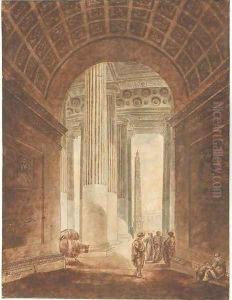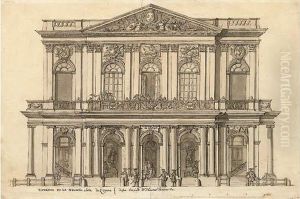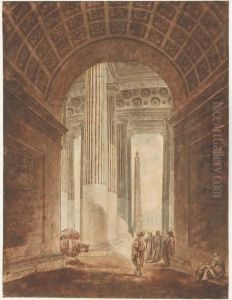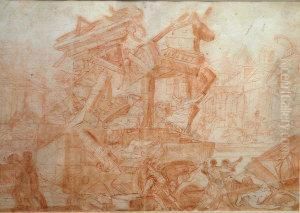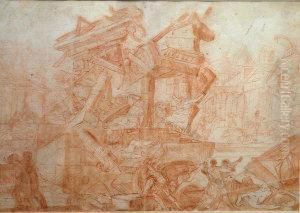Louis-Nicolas Louis (Victor Louis) Paintings
Louis-Nicolas Davout, also known as Victor Louis, was a notable French architect and urban planner, born on May 10, 1731, in Paris, France. He is best remembered for his classical style, which was influenced by his travels to Italy and his studies of ancient Roman architecture. Despite the common confusion with names, it is important to note that Louis is not to be confused with Louis-Nicolas Davout, a French general during the Napoleonic era.
Louis's education in architecture began at a young age and was significantly shaped by his winning of the prestigious Prix de Rome in 1755, which allowed him to study at the French Academy in Rome until 1761. This period was crucial in the development of his architectural style and vision.
Upon his return to France, Louis quickly established himself as a prominent architect. His mastery of classical principles and his ability to adapt them to contemporary needs made him a favorite among the French aristocracy. One of his most famous works is the Grand Théâtre de Bordeaux, which is considered a masterpiece of 18th-century theater architecture. The theater's grandiose neo-classical façade and its innovative use of space and acoustics exemplify Louis's skill and creativity.
Apart from the theater, Victor Louis is also known for his work on the Palais-Royal in Paris. He was commissioned by Louis Philippe II, Duke of Orléans, to redesign the gardens and surrounding buildings, which included the construction of the famous arcades that still stand today. These arcades introduced a new type of commercial space that combined shopping, dining, and socializing, setting a precedent for future urban developments.
Throughout his career, Louis worked on various other significant projects, including the development of plans for the city of Montpellier and the design of several private mansions in Paris. His architectural legacy is characterized by a balance of grandeur and functional elegance.
Victor Louis passed away on July 2, 1800, in Paris. His body of work has left a lasting impact on French architecture and can still be admired for its classical beauty and innovative designs. His contributions have made him a respected figure in the history of architecture, and his influence can be seen in the works of subsequent generations of architects.
